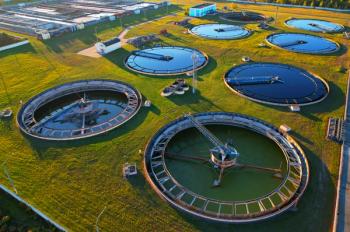
- LCGC North America-05-01-2019
- Volume 37
- Issue 5
Modern Mobile Phase Design for HPLC
In recent years, there has been a paradigm change in the way we approach mobile phase design for high performance liquid chromatography (HPLC). What are the trends?
In recent years, there has been a paradigm change in the way we approach mobile phase design for high performance liquid chromatography (HPLC). The trends are toward more simple linear binary gradients, with fewer additives (buffers, sacrificial bases, exotic pH adjusting reagents). This is possible due to improvements in column stationary phase design; the requirement for volatile buffers to be compatible with atmospheric pressure ionization-mass spectrometry (API-MS) detection, and a desire for improved robustness of analytical methods.
Perhaps the best examples of this new approach are popular eluent systems employing 0.1% w/w trifluoroacetic acid, 0.1% w/w formic acid, or 10 mM ammonia. These simpler systems work on the premise that analytes will be either fully ionized or fully non-ionized in solution, well away from the pKa of the analytes of interest, improving robustness by removing any susceptibility to changes in selectivity due to small variations in eluent pH. Of course, this predicates that the pKa values of our analytes are known or can be reasonably accurately estimated, to ensure that there are no analytes with particularly high or particularly low pKa values.
Reversed-phase retention of ionized analytes can be attained by using polar endcapped or polar embedded type stationary phases, which have only been available recently. Furthermore, trifluoroacetic acid and formic acid are simple ion pairing reagents, which may also improve retention of ionized basic analytes under acidic conditions. Although using ion-pairing reagents is straightforward, it does somewhat restrict method development choices to altering stationary phase chemistry, the organic modifier used (acetonitrile or methanol), and the gradient slope. It is also important to realize that these additives are relatively volatile, and steps should be taken to avoid their evaporative loss from the eluent reservoir during extended campaigns of analyses. Also, ion-pairing reagents such as trifluoroacetic acid may strongly bind to the stationary phase, and should be carefully washed from the column post analysis, or used only with the columns dedicated to analyses that use these additives. A further note of caution is that the specification of additive concentrations needs attention; 0.1% w/w trifluoroacetic acid produces a significantly different pH from 0.1% w/v of trifluoroacetic acid.
For certain separations, the ionic strength of the mobile phase can alter the selectivity obtained, and this will not only depend on the analyte chemistry but also on the nature of the bonded phase and silica substrate. Retention and resolution variability can occur due to secondary ionic strength gradients (higher to lower ionic strength) that occur when the buffer is added to the aqueous component (mobile phase A) only. The magnitude of these selectivity changes will depend on the nature of the interactions between the analyte and the bonded phase ligand or stationary phase surface. However, these effects can be mitigated via the use of a ternary pumping system in which the buffer is added at a constant concentration. For example, if 10 mM ammonium acetate is required, a third pump can deliver a constant 5% of a 200 mM solution of ammonium acetate, in order to deliver the constant ionic strength required during the whole gradient analysis, the organic and aqueous portions being proportioned accordingly. A similar approach can be taken with trifluoroacetic acid or formic acid, if required. There are secondary benefits to this approach, which include more robust and repeatable electrospray liquid chromatography–mass spectrometry results, and a reduction in baseline "slope" during the method, which is particularly true when using ultraviolet (UV) detection at wavelengths below 220 nm.
We have also noted that modern HPLC users strive for the fewest numbers of operations in eluent preparation, to improve repeatability and robustness. Users tend to select higher grade solvents, which do not require filtration, and contribute less to the background signal. Additionally, more and more often we see eluents being prepared using accurate volumetric or gravimetric techniques, negating the requirement for pH adjustment using a pH electrode, which again helps to improve accuracy and removes potential cross contamination from the electrode itself.
The use of nonvolatile buffers continues to decline, perhaps in line with the rise in popularity of API-MS detectors. We have seen a moderate increase in more volatile "true" ion pairing reagents, such as heptafluorobutyric acid, which produce satisfactory retention for ionized analytes in reversed-phase liquid chromatography, while retaining good analyte sensitivity with MS detection.
We see a large upturn in the use of acetonitrile in favor of methanol as the first-choice organic modifier in many application areas, perhaps due to perceived superior selectivity, efficiency, and sensitivity with UV detection. Although this may be true in some instances, there will be applications in which methanol produces the best selectivity, and when using phenyl stationary phases, when it should be the de-facto choice to achieve optimum selectivity. We would urge method developers to screen separations using both modifiers to make more informed choices.
Articles in this issue
over 6 years ago
Vol 37 No 5 LCGC North America May 2019 Regular Issue PDFover 6 years ago
Method from Mars? Coping with Chromatographic Legaciesover 6 years ago
New Gas Chromatography Products for 2018–2019over 6 years ago
New Sample Preparation Products and Accessories (2020)over 6 years ago
Data Integrity Focus, Part V: How Can USP Help Data Integrity?Newsletter
Join the global community of analytical scientists who trust LCGC for insights on the latest techniques, trends, and expert solutions in chromatography.





